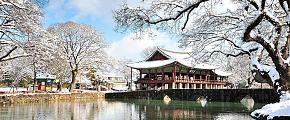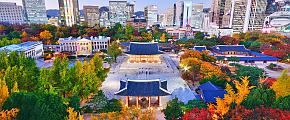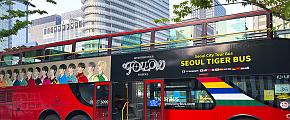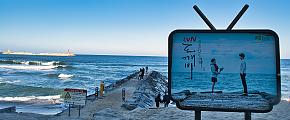Top South Korea UNESCO Sites: World Heritage in Korea
From ancient temples to scenic volcanic islands, South Korea boasts some of the world's most iconic UNESCO heritage sites. In this article, we'll take you through these cultural gems and suggest fun activities to do while visiting. Whether you're on a South Korea tour or a quick getaway, these sites offer more than just history - they're a chance to experience the country's long-cherished traditions and stunning landscapes.
Bulguksa Temple
Bulguksa Temple, located in Gyeongju, is one of South Korea's most iconic UNESCO sites. It's about an hour's drive from Busan, making it perfect for a quick visit after your beach holiday.
This Buddhist temple is famous for its stunning architecture and serene beauty, with stunning temple pagodas and stone bridges that are great photo ops.
Bulguksa hosts cultural and religious events year-round, including Buddhist ceremonies and traditional performances. The best time to visit Bulguksa is from April to June and September to November, when the weather is mild and the temple is surrounded by cherry blossoms or autumn leaves.
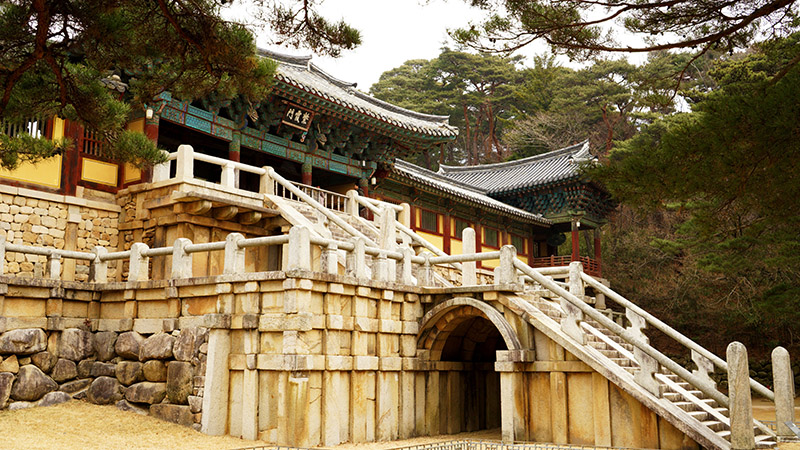 Bulguksa Temple, Gyeongju
Bulguksa Temple, Gyeongju
Seokguram Grotto
Seokguram Grotto, not very far from the Bulguksa Temple, houses a beautiful stone Buddha statue surrounded by elaborate carvings. Every sculpture in the grotto could be considered a masterpiece of East Asian Buddhist art.
Located on Tohamsan Mountain in Gyeongju, the grotto's serene atmosphere and intricate carvings make it a spiritual highlight of any visit. A scenic hike up to reach this UNESCO gem or a short drive from Bulguksa Temple, offering breathtaking views - especially in spring, when cherry blossoms enhance the experience, adding even more magic to your day trip from Busan.
Gyeongju Historic Areas
Gyeongju, often referred to as the "museum without walls," is a treasure trove of ancient Korean history, home to the Gyeongju Historic Areas, which include royal tombs, ancient palaces, and other key Silla Dynasty sites, best for a spring or autumn visit when the flowers and leaves add a splash of color to its historic sites.
Be sure to visit Anapji Pond, which is particularly enchanting when illuminated at night, or explore the National Museum of Gyeongju, which showcases relics from the Silla Dynasty. Starting your journey from Busan, just an hour away, is a great option if you're looking to make it a half-day or day trip.
Note: While Bulguksa Temple and Seokguram Grotto are also UNESCO-listed sites in Gyeongju, they are part of a separate designation.
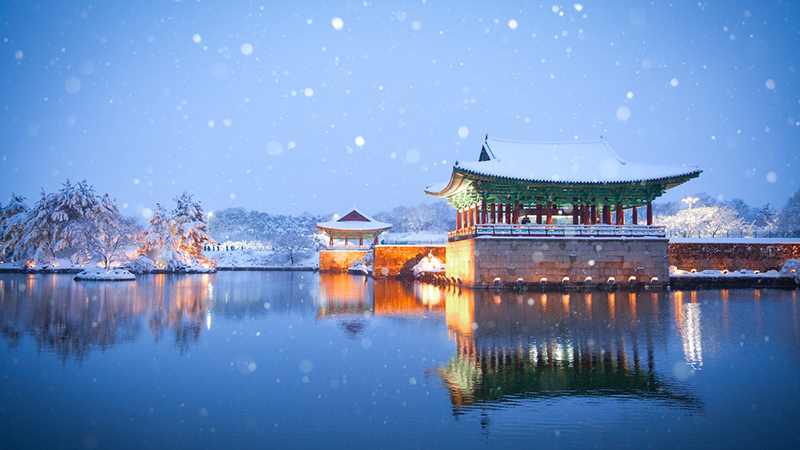 Donggung Palace and Wolji (Anapji) Pond
Donggung Palace and Wolji (Anapji) Pond
Haeinsa Temple
Haeinsa Temple, nestled in the serene Gaya Mountains, is home to the Tripitaka Koreana, the oldest and most complete set of Buddhist scriptures in the world. It's not only a spiritual site but also deeply connected to Korean Buddhist culture.
Haeinsa is about a 3-hour drive from Busan, making it an ideal day trip or overnight retreat. You can participate in meditation sessions and immerse yourself in the peaceful atmosphere. For a truly unique experience, you can even spend a night at the temple through their temple stay program, where you'll participate in Buddhist rituals and daily practices.
Suwon Hwaseong Fortress
Only a 1.5-hour drive from Seoul, Suwon Hwaseong Fortress offers a close look into the military architecture of the Joseon Dynasty. This UNESCO site is known for its impressive walls, gates, and watchtowers, showcasing the advanced engineering of the time.
A fun fact is that the fortress features a unique "night walk" experience, allowing visitors to explore the illuminated structure under the stars. It's the perfect way to see the fortress in all its glory, with stunning views of the surrounding city and mountains. Suwon Hwaseong also hosts cultural performances, traditional Korean tea ceremonies, and other events throughout the year.
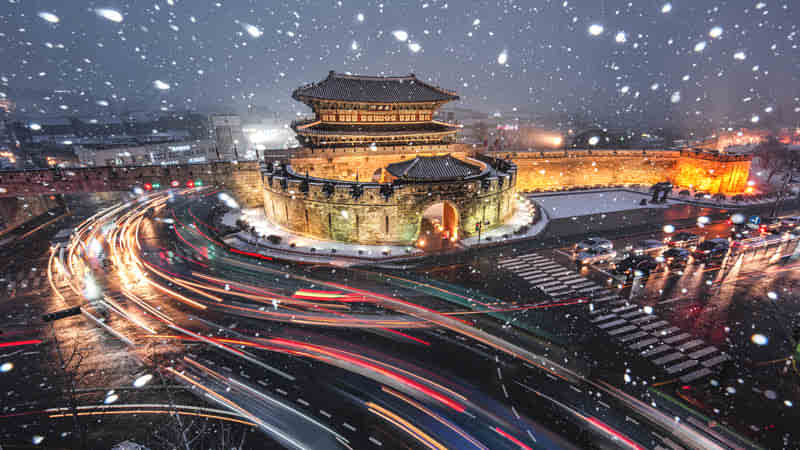 Suwon Hwaseong Fortress
Suwon Hwaseong Fortress
Jongmyo Shrine
Jongmyo Shrine, located in Seoul, is a Confucian shrine dedicated to the royal ancestors of the Joseon Dynasty. One of the coolest facts about this site is that it's a place where you can witness Korea's traditional ritual ceremonies performed during certain festivals.
If you're visiting this UNESCO site in May, don't miss the Jongmyo Jeryeak, an ancient royal ritual that features music and dances from the Joseon era. It's an easily accessible world heritage site by subway, located just about 30 minutes from central Seoul.
Namhansanseong
Namhansanseong, a mountain fortress just a 1-hour drive from Seoul, is perfect for a half-day trip. Built in the 17th century, the fortress has a rich history of military defense and is now a fantastic spot for hiking.
With a variety of trails ranging from easy walks to more challenging hikes, it offers panoramic views of Seoul and its surroundings, as well as a glimpse into the fortress's military history when you go through its historical gates and watchtowers.
The fun part? Apart from exploring the fortress through hiking trails, there's even a hanbok experience available where you can wear traditional Korean clothing while walking the walls.
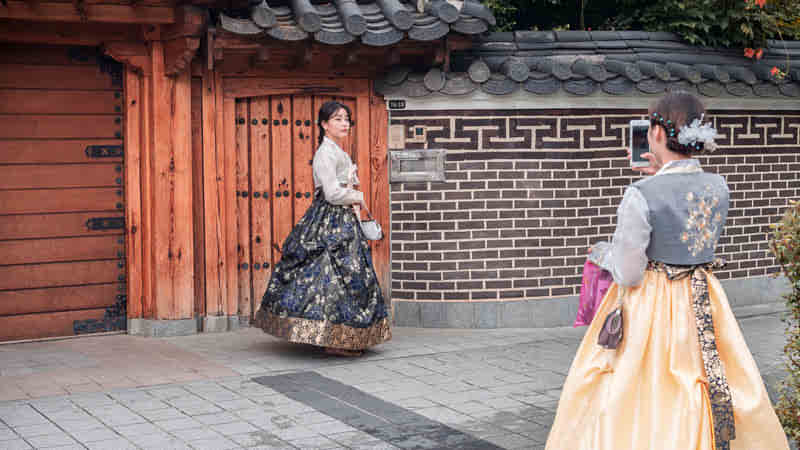 Hanbok Experience
Hanbok Experience
Royal Tombs of the Joseon Dynasty
Scattered across Seoul and other areas of Korea, the Royal Tombs of the Joseon Dynasty offer a fascinating look into the country's royal history. These tombs are unique for their distinctive burial rituals, with each site often set against a backdrop of stunning natural beauty.
Notable tombs like Donggureung in Guri showcase unique burial rituals, including the alignment of tombs according to geomancy. In Seoul, Seonjeongneung offers a peaceful setting with royal tombs surrounded by gardens. Seasonal festivals, such as the Royal Tombs Festival in the fall, feature reenactments of ancient burial rites. Located just 1 to 2 hours from Seoul, these tombs make for a perfect half-day trip.
Changdeokgung Palace
Just a short 15-minute ride from the city center, Changdeokgung Palace, one of Seoul's most famous palaces and popular UNESCO sites, stands out for its "Secret Garden" (Huwon), which is a beautiful spot for a peaceful stroll. During the autumn months, the garden turns into a breathtaking sea of fall colors.
For a truly unique experience, you can explore the palace's beautifully preserved architecture with hanbok, offering an insight into the royal lifestyle of the Joseon Dynasty. Take part in a guided tour to learn about the palace's history, and, on certain days, join in the traditional tea ceremonies held within the palace grounds.
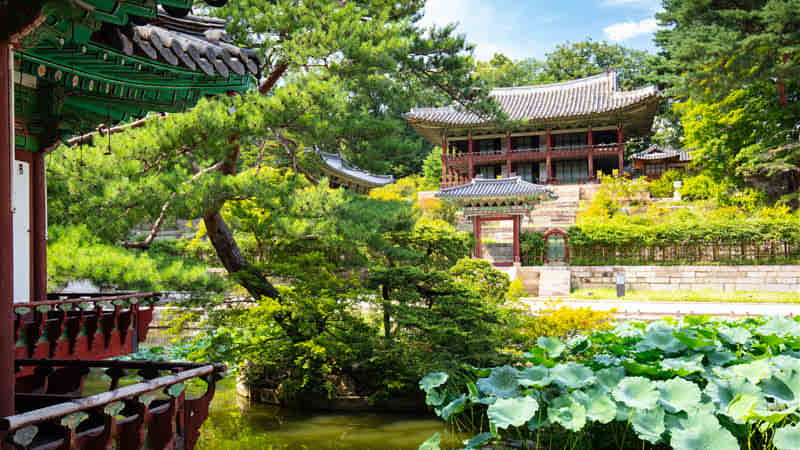 Changdeokgung Palace's Secret Garden
Changdeokgung Palace's Secret Garden
Jeju Volcanic Island and Lava Tubes
Jeju Island is a nature lover's paradise, and its UNESCO World Heritage site beautifully showcases the island's unique geological features. Explore Jeju's volcanic craters, scenic coastlines, and fascinating underground lava tubes, all offering stunning landscapes and opportunities for adventure.
If you're visiting in spring, be sure to check out the Jeju Fire Festival, a vibrant celebration where locals come together for fire-based activities, traditional performances, and cultural displays. Jeju Island is about a 1-hour flight from Seoul, making it an ideal destination for a weekend getaway.
Hahoe and Yangdong
The iconic Korean historic villages of Hahoe (in Andong) and Yangdong (in Gyeongju) provide an immersive experience of Korea's Confucian culture. At these UNESCO sites, you can explore well-preserved traditional Joseon dynasty homes, study halls, and pavilions that frame the poetic village landscapes.
In Hahoe Village, old folk customs and some intangible cultural assets still exist in these old traditions of clan-based villages. In summer, these dense forests come alive with seasonal festivities, including mask play and folk games with flames leaping, adding even more charm to the visit.
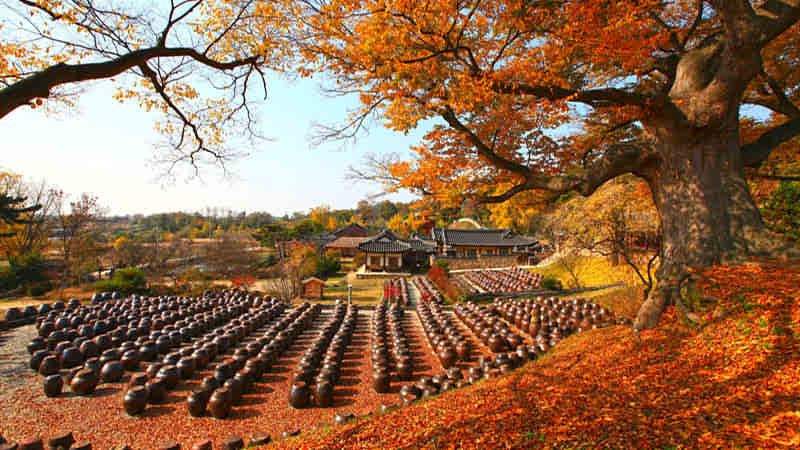 Hahoe Folk Village
Hahoe Folk Village
Seowon (Neo-Confucian Academies)
The Seowon are a collection of nine Korean Neo-Confucian academies, each offering a unique insight into the intellectual history of the Joseon Dynasty. These academies were centers of education and scholarship, deeply influencing Korea's educational system.
A great place to start is the Dosan Seowon in Andong, famous for its historical significance and beautiful surroundings, or Musan Seowon, which is relatively close to Seoul. Visiting these academies allows you to explore traditional architecture, learn about their educational influence, and even try cultural activities such as calligraphy workshops. The Seowon are scattered across Korea, with some accessible within a 2-3 hour drive from Seoul, making them ideal for a day trip.
Explore South Korean World Heritage Sites With Odynovo
South Korea's UNESCO sites offer a truly fascinating blend of ancient history, cultural practices, and natural beauty. Whether you're exploring tranquil temples, hiking through historic mountain fortresses, or experiencing the country's vibrant seasonal festivals, each destination provides a unique and enriching experience. The variety of activities available, from traditional tea ceremonies to breathtaking hikes, ensures that every visitor will find something to love. Contact us to explore these world-class destinations in Korea!
Related Posts You May Like
What Our Clients Say
Explore the latest verified reviews of Odynovo's travel services on Tripadvisor, Google, Trustpilot, Product Review and more trusted platforms.



